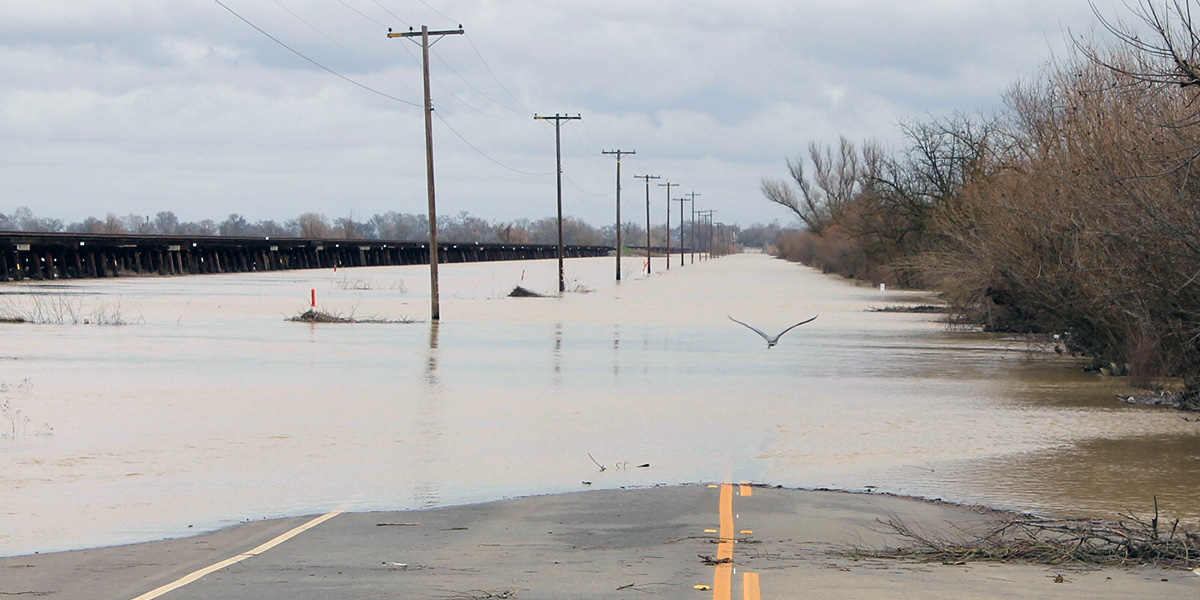What’s your Rapid Response Plan?

Between Charlottesville, Harvey, Irma, DACA, and in today's news, a major earthquake, our office has been on high alert. Our Creative Director Regina says that she feels like a storm watcher, and last week, Account Executive Adrian and I were working on hurricane emergency appeals as we stood on the podium preparing to speak about rapid response at the DMA Conference –– literally.
So, we thought it was only fair to offer you our tried-and-true perspective on how to handle rapid response at your organization. But first –– we should dispel a myth.
Plan in Advance
Rapid response is largely not about day-of planning, it's about how you can prepare when you're in a moment of (relative) calm.
Does your organization have a rapid response protocol? If not, it should. For some organizations it’s natural that you have a process in place. You’re used to watching for Supreme Court decisions or are on-the-ground in hurricane-prone countries. Or you’re an animal shelter and know that when there is a case of hoarding, you will get an influx of pets that need recovery. Or you provide care to the homeless and know that a blizzard can be deadly. But for some organizations, you may be taken by surprise. Our client Citymeals on Wheels is prepared for heat waves and blizzards, but never thought that meals for the elderly was a controversial political issue –– until it was targeted in federal budget planning a few months ago.
There is no one-size-fits-all approach. Rapid response protocol may (and should) vary by organization, but it should cover the following themes. Depending on your organization, you may want to assign how much time each step should take, but remember –– time is of the essence.
-
Monitor what’s happening. What topics are important to you? What tools are you using to monitor media, Twitter feeds, and other news sources? Who is responsible for keeping an eye on things and do they know who needs to be notified if or when something comes up?
-
Notify the right people. Who are your decision-makers? What is the fastest way to reach them as a group? How big is that group? How senior is that group? Do you need them to have access to a conference call line or other technology to meet as a group even if it’s a Saturday? And of course, who is back-up if people are (god forbid) on vacation or out sick?
-
Decide. It may sound silly, but make sure that your decision-makers are empowered to make decisions, know what tools are in their arsenal, and communicate necessary action down the line of command. They will need to decide first, whether or not to respond, and second, what the response is. Once they have developed the core of the message, that needs to be disseminated. For example –– do you need to reassure your constituents about the benefits of your programs or fundraise externally or spring into action with an advocacy plan –– or all of the above?
-
Respond internally. Very quickly, you need to develop your internal talking points and get organization-wide buy-in.
-
Respond externally. This is where the magic happens. Once your talking points are developed and you know what type of messaging is going out (ex: do you fundraise or not?), trust that the appropriate staff members or agency partners can work out the right language for their medium using your talking points. What channels are available to you –– press releases, your website, email, social media, etc.? How can you be sure that everyone is cooperating?
(Extra thanks to our friends at the African Wildlife Foundation for highlighting some key aspects of their rapid response protocol when we presented on this at NTC last year!)
In addition to having your process in place, think about what templates will make your response as fast and seamless as possible. For some of our clients, this includes:
-
Creating donation form template(s)
-
Creating emergency email template(s)
-
Drafting language for emergency emails if you are impacted by heat waves, blizzards, or other regular occurrence
-
Drafting language if you know there may be a certain range of outcomes, such as anticipating a Supreme Court decision
-
Pre-printing direct mail stock so that you can laser a one-page letter and go to press quickly
With all of that, you and your organization will be ready to respond as quickly as possible.
When the Moment Comes
With all of that advance planning, your rapid response will go smoothly and seamlessly, right? No. Almost never. But, it will go out much more smoothly than if you didn’t have all of that in place.
Some important notes to keep in mind when you’re in the thick of it are:
-
Make sure you’re all operating in the same direction. Some emergencies will require you to be all-hands-on-deck, and others will require you to delegate, so some staff focus wholeheartedly on this while others keep regular operations moving forward. Either way, make sure that your workload is set so each person or team knows what they are responsible for. Act swiftly, but make sure you’re collaborating.
-
Use the tools you have already. This is not the time to make changes to your templates. Make a note of what you want to change after the emergency… but for today, it’s fine.
-
Be nimble. A hurricane may change direction. Or there may be new technology that you want to try to use for outreach right now that wasn’t available 6 months ago. Or a campaign may be so successful that you want to add acquisition budget. As long as you know who is responsible for what and coordinate with each other, you’re A-Okay.
-
Time is of the essence. If you wait a few days, or even a few hours, you may miss the boat. Where does your process get held up and can you streamline it? For many of our clients, this means that copy does not need to go through a standard approval process – and that’s okay.
-
Don’t sweat the small stuff. Is there a typo? Does the word “that” appear too many times? Do you have one source code for the appeal instead of one for each segment? Is there an extra gap on a mobile version of an email? It’s okay. Take a deep breath, check your send lists, and get it out.
Lastly, even if your organization is not actively involved in the issues at hand, we recommend considering whether your schedule or messaging may need to shift in the face of major disasters. Right now, we are postponing appeals and adjusting messaging for clients across the board as national attention is focused on disaster response.
Speaking of… I have email streaming in about disaster response so I’m going to get back to it. We will keep doing what we can from here to support those impacted by these current disasters, and we hope the efforts of our nonprofit partners and all of you are successful in mitigating damage and helping people get back on their feet as quickly as possible.
